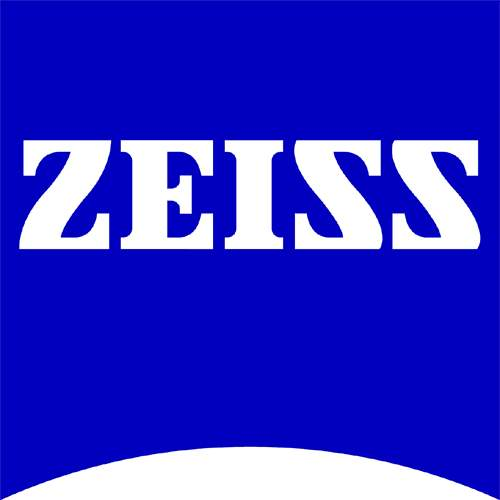|
15th Annual Symposium Physics of Cancer Leipzig, Germany Sept. 30 - Oct. 2, 2024 |
PoC - Physics of Cancer - Annual Symposium | ||||||||||||||||||||||||||||||||||||||||||||||||||||||||||||||||||||||||||||||||||||||||||||||||
|
|
Contributed Talk
Magnetic Resonance Elastography-Derived Penetration Rate as a Biomarker for Pre-Cancerous Liver Changes in Metabolic Dysfunction-Associated Steatohepatitis
Contact: | Website
1. Introduction
Magnetic resonance elastography (MRE) non-invasively quantifies biomechanical tissue properties, including shear-wave speed (SWS, in m/s) as a measure of stiffness, and penetration rate (PR, in m/s) as a surrogate of inverse viscosity[1, 2]. MRE allows for the examination of metabolic dysfunction-associated steatohepatitis (MASH)[3]. If untreated, MASH progresses to life-threatening liver diseases such as fibrosis and hepatocellular carcinoma (HCC)[4, 5]. Therefore, a comprehensive understanding of MASH is crucial for accurately characterizing the hepatic pre-cancerous environment. This study aims to identify potential associations between the changes of liver microstructure and proteomic expression along the development of MASH, and the MRE-derived biomechanical parameters to better characterize the pre-HCC liver environment. Prior research has demonstrated that liver fibrosis results in hepatic stiffening, while steatosis is linked to a decline in water diffusivity[6]. Additionally, it was demonstrated that alterations in the viscoelastic matrix, irrespective of stiffness, impact HCC growth[7]. We postulate that liver stiffness, viscosity, and water diffusion may serve as sensitive markers for the assessment of pre-HCC conditions in the liver. 2. Methods Fourty-five C57BL/6 mice were fed an amino acid-defined, high-fat diet (CDAHFD) for different periods in days (d12=12, (N=10), d21=21 (N=10), d81=81 (N=10), d121=121 (N=10)) to induce MASH. A control group (N=8) was included (d0)[4]. Mice were measured using a 3T MRI scanner (Magnetom Lumina, Siemens, Germany) using a mouse coil (Rapid Biomedical GmbH, Germany). For all measurements, twenty axial slices were acquired: T2w images: Resolution 0.25x0.25x1.2mm 3, TR=2500ms, TE=77ms. Hepatic fat fraction (HFF): Resolution 1mm3 isotropic, TR = 5.6ms, TE1=2.46ms, TE2=3.69ms. MRE: Resolution 1x1x1.2mm3, vibration frequencies 300, 400, and 500 Hz. Diffusion-weighted images (DWI): Resolution 1x1x2.4mm3 , b-values 50, 400, and 800s/mm2. Maps of SWS (in m/s) and PR (in m/s) were reconstructed using the k-MDEV algorithm[2]. Following imaging, mice were sacrificed, and the livers were harvested. A small section of each liver was snap-frozen for proteomic analysis. The remaining tissue was stained with Hematoxylin & Eosin (H&E) to stage MASH progression across all experimental mice groups. The grades of steatosis and lobular inflammation were subsequently scored[7]. Two different protein subsets were isolated. The first subset included associated with antioxidant activity throughout the disease course: Prdx1, Prdx4, Prdx6, Ephx2, Gpx1, Gpx3, Gpx4, Dhdh, Gstp2, Haao, Sod3, and Pdf[9]. A second proteomic subset comprised proteins involved in the inflammatory upregulation and the recruitment of inflammatory cells: Csf1r, Cd163, Cd5l, Chil3, Il18, Trem2, Cd14, Tnfaip2, Tnfaip8, Tnfaip8l1, Tnfaip8l2, Il6st, and Tlr2[8, 9]. 3. Results MASH progressed gradually over time without the development of fibrosis. Therefore, no significant changes in SWS were observed (p=0.47). HFF increased with 553.6±200.0% from baseline to day 21 (d0=5.2±1.0%, d21=35.5±5.4%, p=4.5e-4) followed by a subsequent decrease between day 21 and day 121 (d121=21.9±2.7%, p=3.2e-4). PR increased with 34.0±22.2% over the course of the disease (d0=1.9±0.3ms, d121=2.5±0.3ms, p=7.9e-7). Apparent diffusion coefficient (ADC) decreased by 30.3±20.4% (d0=1427.0±190.4µm²/s, d121= 994.5±315.6µm²/s, p=0.006). Hepatic steatosis was graded at stage 3 for all experimental groups (d12-121), which indicates a fat deposition higher than 50% in the liver. The lobular inflammation score consistently increased overtime (d0=0.3±0.5, d121=2.5±0.5, p=3e-07). An increase in inflammatory proteins was quantified (d0=8.3e-5±2.5e-5, d121=1.7e-4 ± 4.8e-5). The antioxidant activity proteins, however, decreased over the course of the disease (d0=0.02±0.0005, d121=0.02±0.002). Relevant correlation coefficients were found for PR vs. lobular inflammation (p=0.0003, R=0.52); PR vs. Inflammation proteins (p=0.005, R=0.41); PR. vs. antioxidation proteins (p =0.0003, R=-0.52); HFF vs. steatosis grade (p=7.3e-7, R=0.66); ADC vs. steatosis grade (p=0.002, R=-0.45). 4. Discussion Oxidative stress is widely regarded as a marker for HCC progression and metastasis[10, 11]. In our MASH model, we quantified antioxidant proteins, and observed their decrease over time suggesting a rise in oxidative stress affecting hepatocytes. The observed increase in oxidative stress was accompanied by elevated levels of inflammatory proteins, which has been described as two complementary processes contributing to hepatic inflammation[10, 11]. Surprisingly, PR in our study was correlated with oxidative stress suggesting a reduction of in vivo tissue viscosity in response to the formation of a precancerous niche. Similarly, ADC appeared to decrease with increasing HFF in the liver. This suggests reduced water diffusivity as a marker for increased cellularity due to immune cell infiltration and the accumulation of fatty droplets. The lack of sensitivity of SWS was likely due to insignificant fibrotic development within our model. Instead, the increase in PR and changes in HFF and ADC appears to more accurately reflect the microstructural and molecular alterations occurring within a pre-tumor hepatic environments. In conclusion, we demonstrated that MRE-based viscosity measurement, particularly PR, in combination with histological and proteomic markers, provides a comprehensive assessment of MASH progression towards a pre-HCC liver environment. PR may serve as a valuable biomarker for detecting early-stage liver disease changes before the onset of fibrosis or HCC.
|









